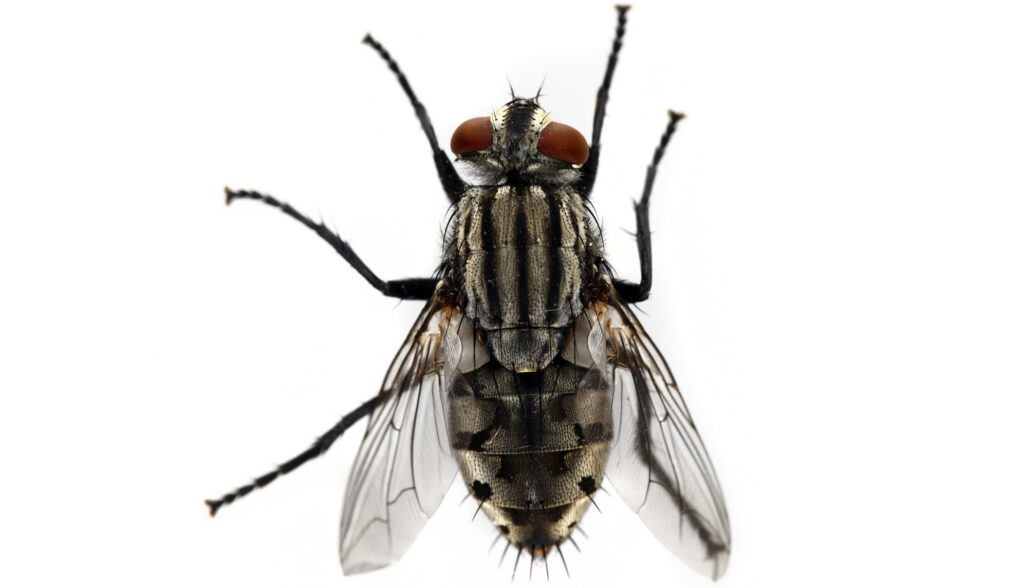House Flies

Origins and distribution
Very common worldwide and are often associated with human activity.
Characteristics
The common house fly is approximately 6 – 8 mm long, with the lesser house fly being slightly smaller (about 5 – 6 mm long). They have a grey/black chequered, slightly hairy abdomen. They have large compound eyes, which are wider apart in the female and a very acute sense of smell. At rest the wings are spread wide.
There are a number of flies that regularly come in contact with humans such as:
- False stable fly (Muscina stabulans)
- Bluebottle fly (Calliphora vicina)
- Greenbottle fly (Lucilia spp.)
- Flesh fly (Sarcophaga spp.)
- Scuttle fly (Megaselia pleuralis)
- Horse flies (Tabanidae)
- Yellow dung fly (Scathophaga stercoraria)
- Yellow cluster fly (Thaumatomyia notate)
- Blow fly (Calliphora erythrocephala)
- Sewage flies (Psychoda spp.)
Breeding
Females lay up to 150 whitish eggs on rotting material, which hatch in about 8 – 48 hours. The larvae (legless maggots) are approximately 12 mm long develop over a period of between 5 to 30 days, depending upon temperature after which they pupate. The pupation stage takes about 1 – 2 weeks before the adults emerge.
Habits
Associated with human activity and are active fliers and are capable of travelling several miles. Breed usually in rotting vegetable matter or animal faeces and are often found around refuse compactors, bins or areas where poor hygiene management occurs. Often enters food premises through doors or windows attracted to light fittings.
Importance
They can become a nuisance causing severe problems in areas such as refuse tips, waste handing units and animal units. They often enter food establishments spoiling food by their habit of vomiting and defecating. They present a risk of disease transmission such as enteritic diseases, intestinal parasitic worms and the spread of typhoid and cholera.
How we control House Flies
Physical control is the most effective form such as good housekeeping and hygiene practices. Removing organic matter, or where this is not possible such as in waste management areas and manure heaps being covered over will assist in keeping numbers down. Larvicides, biological control and the application of space spray and residual insecticides can help in some situations and we can advise you as to the best course of action. Fitting fly screens to windows and door openings will prevent them entering into areas such as kitchens and food processing areas, this along with installing electric fly killing machines is essential in ensuring that your business complies with legislation. In domestic situations where activity is minimal a hand held aerosol for flying insects and approved for domestic use will help.


















